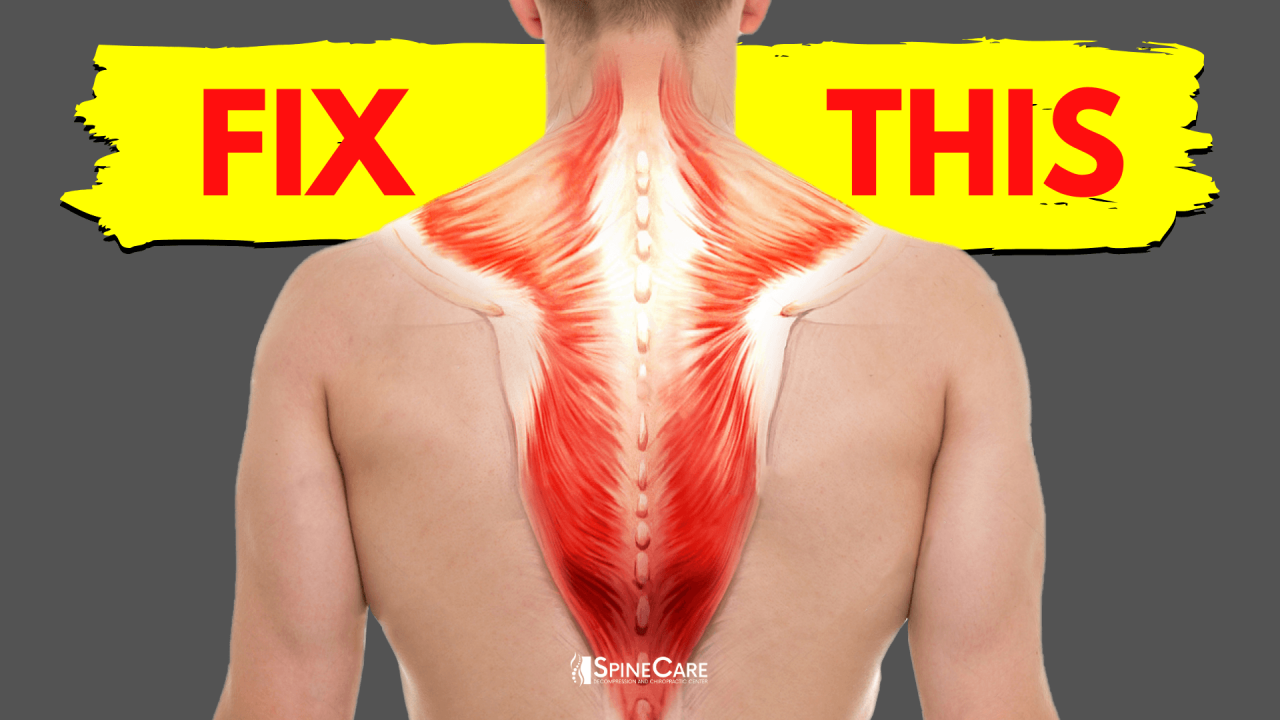
How can stiff and tight muscles result in back pain? This question delves into the intricate relationship between musculoskeletal health and chronic discomfort, unveiling the mechanisms by which muscle tension can manifest as debilitating back pain.
If you’re seeking exercises specifically designed for your lower back at home, explore lower back exercises at home . These exercises, tailored to various fitness levels, are designed to alleviate lower back pain, improve posture, and enhance mobility.
Muscle stiffness and tightness, often caused by factors like age, lack of exercise, or poor posture, can have profound effects on the spine’s structure and function. When muscles become rigid, they can alter spinal alignment, leading to imbalances that put undue stress on the vertebrae and surrounding tissues.
This strain can trigger pain, inflammation, and reduced mobility.
How Can Stiff and Tight Muscles Result in Back Pain?

Muscle stiffness and tightness can significantly contribute to back pain. Understanding the physiological processes and mechanisms involved is crucial for effective pain management and prevention.
To address excess fat in the lower back, consider incorporating exercises for lower back fat into your fitness routine. These exercises, designed to target specific muscle groups in the lower back, can help reduce fat accumulation and improve overall body composition.
Causes of Muscle Stiffness and Tightness
Muscle stiffness and tightness can arise from various factors, including:
- Age:As we age, our muscles lose flexibility and elasticity, leading to increased stiffness.
- Exercise:Intense or prolonged exercise can strain muscles, causing them to become tight and sore.
- Posture:Poor posture, such as slouching or sitting for extended periods, can strain certain muscle groups and lead to tightness.
Impact on Spinal Structure and Function
Stiff and tight muscles can impact the spine’s structure and function in several ways:
- Altered spinal alignment:Tight muscles can pull the spine out of its natural alignment, leading to misalignment and pain.
- Reduced spinal mobility:Stiff muscles can restrict the spine’s range of motion, causing pain and discomfort.
- Muscle imbalances:Tightness in one muscle group can lead to weakness in opposing muscle groups, creating imbalances that can contribute to back pain.
Trigger Points and Pain Pathways
Trigger points are small, tender areas within muscles that can refer pain to other areas of the body. In the context of back pain, trigger points in the back muscles can refer pain to the spine and surrounding areas.
Trigger points can develop due to various factors, such as muscle overuse, injury, or poor posture. They can create a cycle of pain and stiffness, as pain can lead to muscle guarding, further tightening the muscles and creating more trigger points.
Common trigger points associated with back pain include:
- Upper trapezius:Located at the base of the neck and top of the shoulders, this trigger point can cause pain in the neck, shoulders, and upper back.
- Levator scapulae:Situated between the shoulder blades, this trigger point can refer pain to the neck, shoulders, and upper back.
- Latissimus dorsi:Located in the lower back, this trigger point can cause pain in the lower back, buttocks, and hips.
Muscle Spasm and Back Pain, How can stiff and tight muscles result in back pain?
Muscle spasms are involuntary contractions of muscles that can cause severe pain and discomfort. They can occur due to muscle fatigue, dehydration, or electrolyte imbalances.
Muscle spasms in the back can be triggered by various factors, including:
- Overexertion:Lifting heavy objects or engaging in strenuous activities can strain back muscles and lead to spasms.
- Muscle fatigue:Prolonged muscle use can deplete energy stores and increase the risk of spasms.
- Dehydration:Lack of adequate hydration can lead to electrolyte imbalances and muscle cramps.
Ending Remarks

Understanding the connection between muscle stiffness and back pain is crucial for developing effective treatment strategies. Physical therapy, massage, acupuncture, and medications can alleviate muscle tension and improve spinal alignment, reducing pain and restoring mobility. Additionally, regular exercise, stretching, and maintaining proper posture are essential preventive measures to keep muscles flexible and strong, minimizing the risk of future back pain.
For individuals experiencing discomfort in their lower back, implementing exercises to relieve lower back pain can provide significant relief. These exercises, which can be performed at home, focus on strengthening the back muscles and improving flexibility, effectively reducing pain and improving overall well-being.
FAQs
Can muscle tightness cause lower back pain?
Yes, tight muscles in the lower back, such as the piriformis or quadratus lumborum, can compress nerves or put pressure on the spine, leading to lower back pain.
How do I know if my back pain is from tight muscles?
In the spirit of celebrating Mother’s Day, express your gratitude to your Vietnamese-speaking mother with happy Mother’s Day in Vietnamese . Convey your love and appreciation with heartfelt words that resonate with your mother’s heritage.
Muscle-related back pain is often accompanied by stiffness, tenderness, and limited range of motion. It may worsen with prolonged sitting or standing and improve with gentle stretching or massage.
What are some stretches for tight back muscles?
Effective stretches for tight back muscles include the child’s pose, cat-cow stretch, and hamstring stretch. Hold each stretch for 30 seconds to 1 minute.






